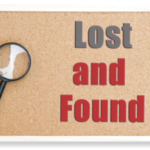So what are busy clinicians going to recommend to their spinal stenosis patients?1 I think clinicians need to explain the nonsurgical and surgical options to patients. Patients who are younger, with no associated joint disease, with single-level stenosis, and without spondylolisthesis who want surgery have a good opportunity to improve with surgical intervention. Patients who chose medical therapy may be more symptomatic for a period of time, but will become better over the subsequent two years.
Reference
IMMUNOLOGY
Potential New Model to study immunological disturbances
By Maripat Corr, MD
Yang YG, Lindahl T, Barnes DE. Trex1 exonuclease degrades ssDNA to prevent chronic checkpoint activation and autoimmune disease. Cell. 2007;131:873-886.
Abstract
Trex1 is the major 3’ DNA exonuclease in mammalian cells, and mutations in the human TREX1 gene can cause Aicardi-Goutières syndrome, characterized by perturbed immunity. Similarly, Trex1(-/-) mice have an autoinflammatory phenotype; however, the mechanism of Trex1-deficient disease is unknown. We report that Trex1, ordinarily associated with the endoplasmic reticulum (ER), relocalizes to the S phase nucleus after gamma irradiation or hydroxyurea treatment. Notably, Trex1-deficient cells show defective G1/S transition and chronic ATM-dependent checkpoint activation, even in the absence of exogenous stress, correlating with persistent single-stranded DNA molecules produced in S phase, which accumulate in the ER. Our data indicate that Trex1 acts on a single-stranded DNA polynucleotide species generated from processing of aberrant replication intermediates to attenuate DNA damage checkpoint signaling and prevent pathological immune activation.
Commentary
In 1984, two French pediatric neurologists—Jean Aicardi and Francoise Goutières—described, in a Portuguese family, a rare neurological condition that is attracting attention as a model to study immunological disturbances in autoimmunity. This condition, Aicardi-Goutières syndrome (AGS), shows autosomal recessive inheritance and is characterized by encephalopathy with elevated lymphocytes in the cerebrospinal fluid, calcification of the basal ganglia, and white matter demyelination.1 In infancy, AGS typically manifests as progressive microcephaly, spasticity, dystonia, and psychomotor retardation. However, AGS is a heterogenous disorder and phenotypic variability includes patients with apparently static or slowly progressive disease, sometimes presenting after several months of normal development.
Recently, mutations in TREX1 and in the genes encoding the three nonallelic components of the RNASEH2 protein complex have been identified in AGS.2-4 TREX1 encodes the major 3’->5’ DNA repair exonuclease in mammalian cells, DNase III/TREX1. Several monoallelic mutations in TREX1 have recently been described in individuals with systemic lupus erythematosus and familial chilblain lupus.5 Despite these known clinical associations, the mechanisms by which TREX1-deficiency promotes disease have remained obscure. In an important new study, Yang et al. describe the accumulation of cytoplasmic single stranded (ss) DNA that is associated with this defect in cell cycle modulation, which could provide a link between this deficiency and chronic inflammation.
